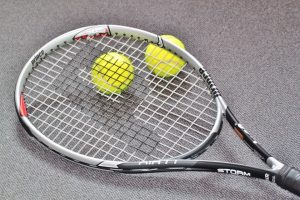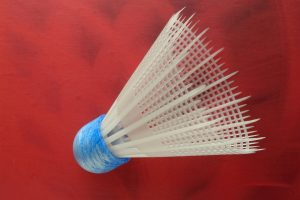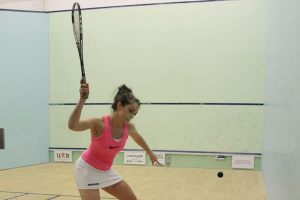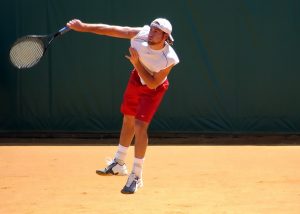Sport Rehabilitation and Physiotherapy for Racquet Sports
 Racquet sports are widely participated in by all ages and genders. However, injury can abruptly put a hold on people’s enjoyment of these sports, due to the vast amount of overuse and traumatic injuries that occur in sports such as tennis, badminton and squash. We understand that injury can be extremely frustrating, so we make it our primary duty to get you back on the court safely and quickly. We implement the most up to date, evidence-based treatments and techniques to aid your rehabilitation and ensure you return better than ever. Our therapists all have a keen interest in sport so know how much it means to get back to playing your chosen sport, pain free.
Racquet sports are widely participated in by all ages and genders. However, injury can abruptly put a hold on people’s enjoyment of these sports, due to the vast amount of overuse and traumatic injuries that occur in sports such as tennis, badminton and squash. We understand that injury can be extremely frustrating, so we make it our primary duty to get you back on the court safely and quickly. We implement the most up to date, evidence-based treatments and techniques to aid your rehabilitation and ensure you return better than ever. Our therapists all have a keen interest in sport so know how much it means to get back to playing your chosen sport, pain free.
Common Racquet Sport injuries
 There are many differing elements that are involved in each type of racquet sport, but one thing that remains consistent is the explosiveness of the movements required. This therefore, increases the load placed on the body’s tissues and can ultimately lead to injury.
There are many differing elements that are involved in each type of racquet sport, but one thing that remains consistent is the explosiveness of the movements required. This therefore, increases the load placed on the body’s tissues and can ultimately lead to injury.
Not surprisingly, upper limb injuries involving the ‘racquet hand’ are common. The aptly named condition ‘Tennis Elbow’ consists of inflammation and irritation to the structures on the outside of the elbow. This can also occur through non-sporting activities such as repeated heavy gripping and lifting. Shoulder injuries are also very common as forceful, repeated overhead movements can cause shoulder impingement syndrome and rotator cuff tears. These injuries can be effectively treated with postural re-education, manual therapy and strengthening techniques. Occasionally, if these injuries are not responsive to treatment, injection therapy is often an effective alternative method of management.
Lower limb injuries again, are very common amongst Racquet Sport players. Muscle strains to calves and hamstrings from high velocity ‘push off’ movements can be extremely painful and debilitating, but can be managed with high quality treatment. Ankle ligament sprains often occur, due to the fast nature of the sports in combination with the hard surfaces. These types of injuries require treatment as soon as possible to ensure that the adequate mobility and stability is restored to reduce the likelihood of prolonged symptoms and re-injury.
Spinal injuries are also prevalent in Racquet Sports because of the rotational and impact forces experienced. The musculature and facet joints of the spine can fall victim to these stresses, which can cause severe pain and irritation. Treatment alongside the detection of any imbalances and biomechanical faults is vital in the treatment and prevention of further injury.
Reducing the risk of Racquet Sport related injuries
 To reduce the risk of a Racquet Sport related injury, it is vital that your training programme consists of mobility, stretching, strengthening, sport specific movement patterns and proprioception.
To reduce the risk of a Racquet Sport related injury, it is vital that your training programme consists of mobility, stretching, strengthening, sport specific movement patterns and proprioception.
Tight muscles can cause imbalances and restrictions that can increase the risk of injury, so it is important that joints are kept mobile and elastic structures are appropriately stretched. Strengthening muscles not only improves the muscle’s capabilities, but adds support to the structures they surround to decrease the risk of failure. It is key to include the correct mixture of stretching and strengthening to ensure there is a balance between stability and mobility.
Proprioception is the brain’s awareness of joint and limb position. It is important that this is continually trained, especially to reduce the risk of ankle sprains. It is also fundamental, that after a traumatic injury, proprioception is trained to reprogram the neural pathways that may have been altered by any change in the joint position. At Metro, your therapist will have a plethora of sport specific exercises to prescribe, ensuring a smooth transition back to sport.
Treatments following a Racquet Sport related injury
 Most of our therapists are directly involved in sport, so understand the demands that are required. Varying treatment techniques are employed to aid in the rehabilitation of a sporting injury. Your therapist will assess and observe your biomechanics to identify any underlying dysfunction that could have caused the injury or lead to a repeat injury. Following this, a plan will be formulated to overcome any issues that are detected.
Most of our therapists are directly involved in sport, so understand the demands that are required. Varying treatment techniques are employed to aid in the rehabilitation of a sporting injury. Your therapist will assess and observe your biomechanics to identify any underlying dysfunction that could have caused the injury or lead to a repeat injury. Following this, a plan will be formulated to overcome any issues that are detected.
Treatment sessions will be tailored towards the individual and the injury, but will typically consist of some of the following techniques; deep tissue massage, deep frictional massage, trigger point release, joint mobilisations, fascial release, Ultrasound Therapy, acupuncture, proprioceptive neuromuscular facilitation, taping/strapping and a specific tailored exercise programme.
Tennis Injury Specialist

All of our therapist’s have experience treating injuries related to racquet sports and Nicola is our specialist in this field. She is the first point of contact for all our team who may require her expert knowledge in this area and she regularly updates the rest of the team on the latest research. Nicola has played badminton, squash and racquetball since a young age and still enjoys the occasional game although on a more social rather than competitive level now! She is aware of the specific movement patterns involved in each racquet sport and this enables her to identify causative factors of injury and the most effective treatment plan for a timely recovery. If you would like to see Nicola she has appointments at our Wirral Clinic.
